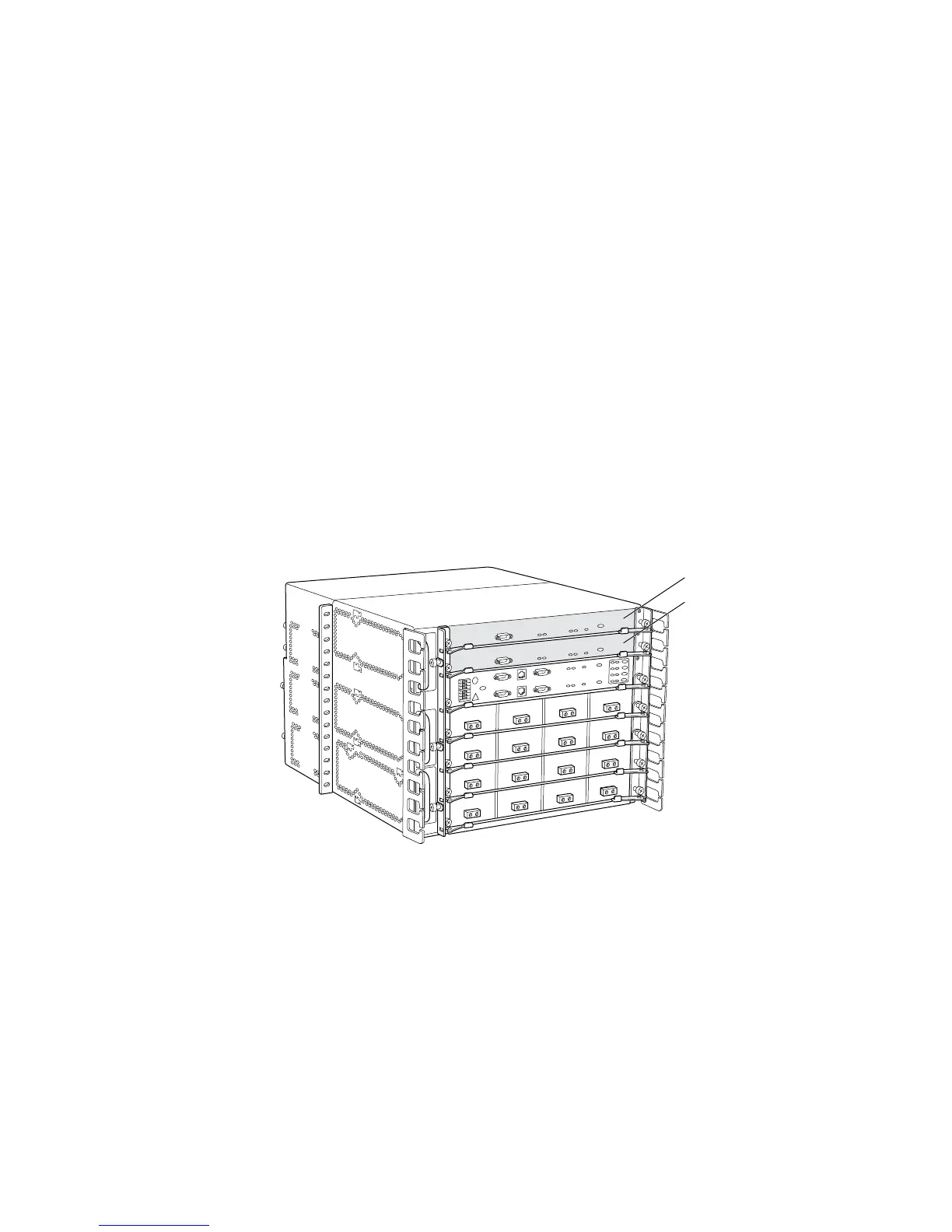Understanding Redundant SSBs ! 607
Chapter 46: Monitoring Redundant SSBs
! System component monitoring—The SSB monitors other system components
for failure and alarm conditions. It collects statistics from all sensors in the
system and relays them to the Routing Engine, which sets the appropriate
alarm. For example, if a temperature sensor exceeds the first internally defined
threshold, the Routing Engine issues a “high temp” alarm. If the sensor exceeds
the second threshold, the Routing Engine initiates a system shutdown.
! Exception and control packet transfer—The Internet Processor ASIC passes
exception packets to a microprocessor on the SSB, which processes almost all
of them. The remaining packets are sent to the Routing Engine for further
processing. Any errors that originate in the Packet Forwarding Engine and are
detected by the SSB are sent to the Routing Engine using system log messages.
! FPC reset control—The SSB monitors the operation of the FPCs. If it detects
errors in an FPC, the SSB attempts to reset the FPC. After three unsuccessful
resets, the SSB takes the FPC offline and informs the Routing Engine. Other
FPCs are unaffected, and normal system operation continues.
Figure 231: M20 Router Redundant SSB Location
The SSB houses the Internet Processor ASIC and two Distributed Buffer Manager
ASICs.
The SSB is hot-pluggable. You can remove and replace it without powering down the
system; however this causes major impact to the system. The following functions
cannot occur while the SSB is removed from the router:
! Route lookups
! System component monitoring
! Exception and control packet monitoring
! FPC resets
1785
SSB0
SSB1
M20 Router
front

